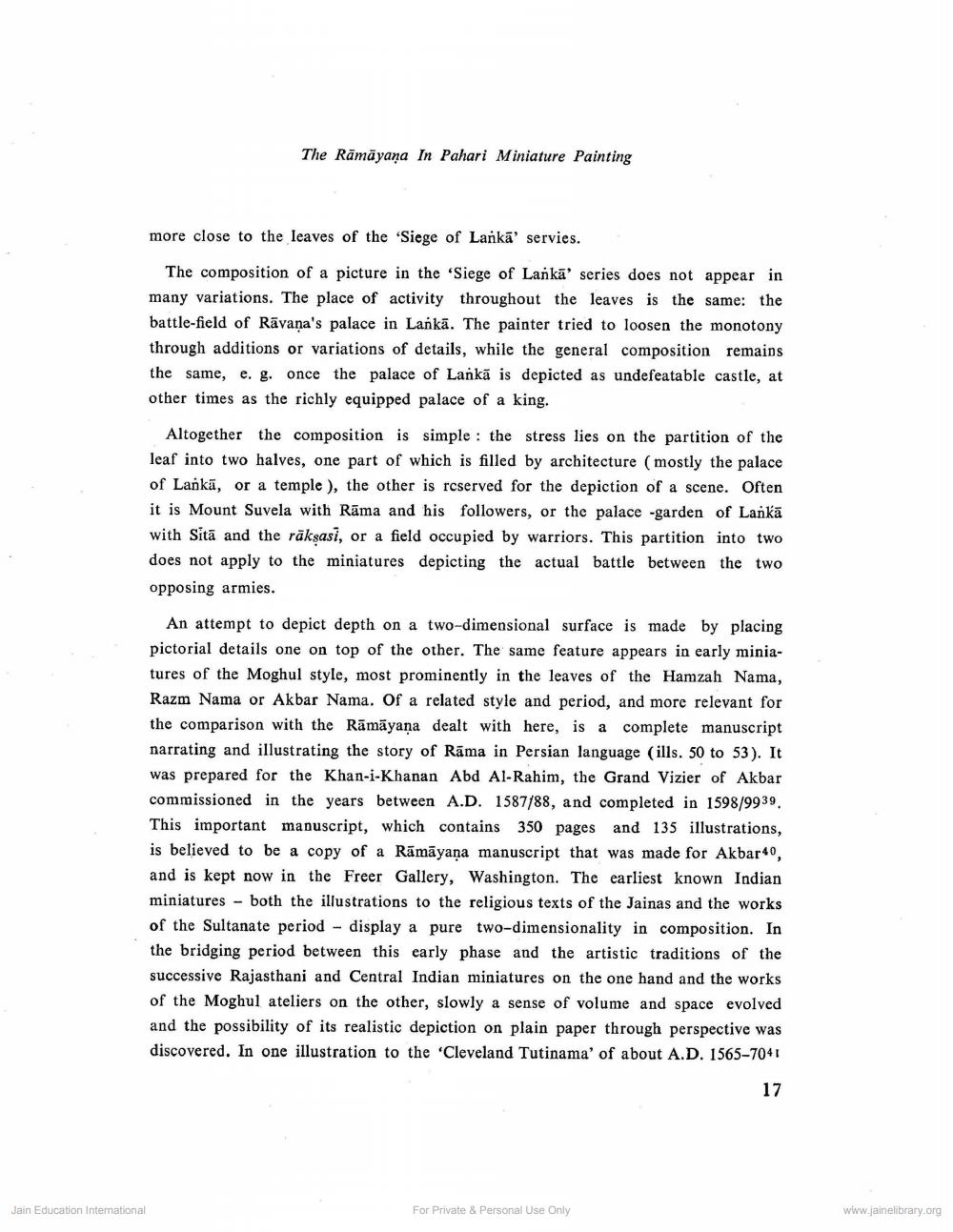________________
The Rāmāyana In Pahari Miniature Painting
more close to the leaves of the 'Siege of Lanka' servies.
The composition of a picture in the 'Siege of Lanka' series does not appear in many variations. The place of activity throughout the leaves is the same: the battle-field of Rāvana's palace in Lankā. The painter tried to loosen the monotony through additions or variations of details, while the general composition remains the same, e. g. once the palace of Lankā is depicted as undefeatable castle, at other times as the richly equipped palace of a king.
Altogether the composition is simple : the stress lies on the partition of the leaf into two halves, one part of which is filled by architecture (mostly the palace of Lankā, or a temple ), the other is reserved for the depiction of a scene. Often it is Mount Suvela with Rāma and his followers, or the palace -garden of Lankā with Sitā and the rākşasi, or a field occupied by warriors. This partition into two does not apply to the miniatures depicting the actual battle between the two opposing armies.
An attempt to depict depth on a two-dimensional surface is made by placing pictorial details one on top of the other. The same feature appears in early miniatures of the Moghul style, most prominently in the leaves of the Hamzah Nama, Razm Nama or Akbar Nama. Of a related style and period, and more relevant for the comparison with the Rāmāyaṇa dealt with here, is a complete manuscript narrating and illustrating the story of Rāma in Persian language (ills. 50 to 53). It was prepared for the Khan-i-Khanan Abd Al-Rahim, the Grand Vizier of Akbar commissioned in the years between A.D. 1587/88, and completed in 1598/9939, This important manuscript, which contains 350 pages and 135 illustrations, is believed to be a copy of a Rāmāyaṇa manuscript that was made for Akbar, and is kept now in the Freer Gallery, Washington. The earliest known Indian miniatures - both the illustrations to the religious texts of the Jainas and the works of the Sultanate period - display a pure two-dimensionality in composition. In the bridging period between this early phase and the artistic traditions of the successive Rajasthani and Central Indian miniatures on the one hand and the works of the Moghul ateliers on the other, slowly a sense of volume and space evolved and the possibility of its realistic depiction on plain paper through perspective was discovered. In one illustration to the 'Cleveland Tutinama' of about A.D. 1565-7041
17
Jain Education International
For Private & Personal Use Only
www.jainelibrary.org




